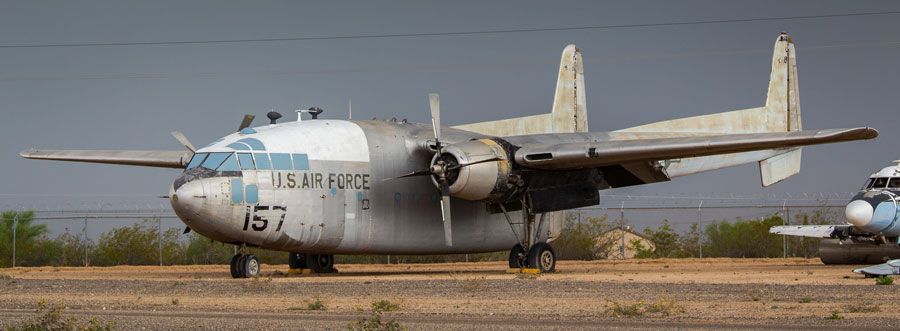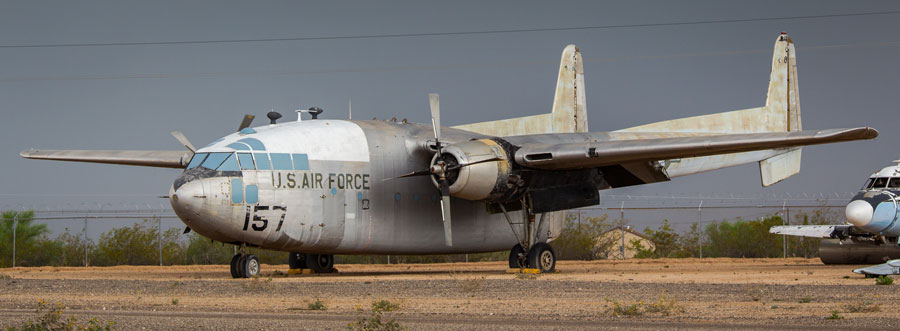Fairchild C-119C_2
Fairchild C-119C Flying Boxcar – 2
Developed from the C-82 Packet the Flying Boxcar was slightly larger than the C-82 and featured strengthened wings and more powerful engines to allow larger, heavier cargos to be carried. It was the primary medium cargo aircraft for the U.S. Air Force during the Korean War. The C-119s were used extensively during the war to airdrop troops and supplies to United Nations forces fighting in Korea. Just over 300 C-119C were built starting in 1949. Flying Boxcars served with the U.S. Air Force in many different roles until the early 1970s and the Taiwanese Air Force used at least 30 of them until early 2001. Many surplus C-119s were converted for use as aerial fire fighters during the late 1960s and early 1970s. In addition to the tanks for fire retardant, some were also equipped with a jet engine mounted on the top of the fuselage to provide extra power while carrying heavy loads at low altitudes over forest fires.
| Wingspan | 109 ft 3 in. |
Wingspan |
| Length | 86 ft 6 in. |
Length |
| Height | 26 ft 6 in. |
Height |
| Weight | 74,000 lbs (loaded) |
Weight |
| Max. Speed | 281 MPH |
Maximum Speed |
| Service Ceiling | 21,580 ft |
Maximum Altitude |
| Range | 1,630 miles |
Range |
| Engines | Two Wright R-4360-20WA radials with 3,500 horsepower each. One Westinghouse J34-WE-36 turbojet with 3,400 pounds of thrust |
Engines |
| Crew | 2 or 3 |
Crew |
Manufacturer
Fairchild
Markings
Hemet Valley Flying Service, Hemet, California, “Tanker 81,” 1975
Designation
C-119C
Registration
N13743
Serial Number
49-132



